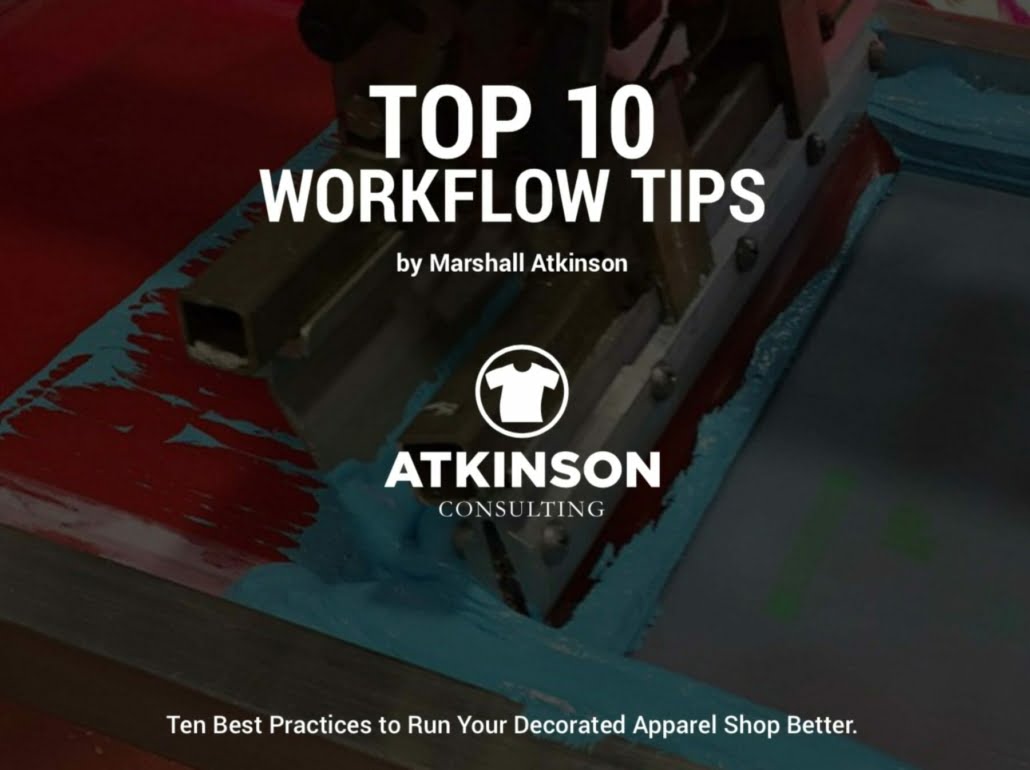While most shop owners and leaders spend a lot of the day pushing orders through the system and making sure everything ships on time, not much time is spent actually looking at the processes in place or how the financial paddle propels their canoe through the water.
Do you have few minutes to unpack this? I think it might payoff for you in the long run.
What am I talking about here?
Let’s break this idea down into four distinct chunks.
- Profitability of work
- Auditing with Cross-functional teams
- Process framework for improvement
- Culture
In the following sections we’ll dig into each of these and map out how you can create a different roadmap to build more value in your company.
Profitability of Work
What do I mean by this?
For starters, let’s get something out of the way. Most business owners that I know are focused on one thing. Top line sales. If you asked them, they can tell you what their sales were for last month, and probably every month going back to the beginning of the year.
But how much money did they actually make? What was the percentage of profit? As my friend Mark Coudray says constantly, “Topline sales are vanity, bottom-line sales are sanity.”
There is a lot of truth to that.
But how do we know what’s actually going on in the business? Have you spent any time mapping out the profitability of each department and the value that they generate for your business? Eh. Probably not.
For apparel decorators, usually only the departments that are functionally adding a decoration to the garment are adding value. The other departments in the company are seen usually as costs.
I want to flip that.
When we focus on the bottom-line value in every department, increases in efficiency, quality improvement, labor cost reduction, consumable reduction, or any other improvement that can drop to the bottom line can increase the value of that department.
One Example: Receiving
For example, most shops have a Receiving Department. Goods come in the door, they get counted, received in the system, box labeled, and staged somewhere on the floor for production.
You might have one to four people working in this area, depending on the size of your shop and workload.
For the sake of a discussion example, let’s say that in our example shop there are two people that work in receiving and they each make $15 per hour. That’s $30 per hour x 8 or $240 every day in labor. It’s easy to argue that these staff members are not contributing to your sales, and are generally seen as an expense.
But, they can have a huge impact on your profit.
What if they miscount the inventory, mislabel a box, somehow lose some items, or any number of errors in the department? Even how they stage and organize the inventory can have a dramatic effect on the efficiency of your production teams.
Daily, what are the key results that these critical team members contribute to the overall profitability health of your company?
Sure, in our example, we are paying $240 a day in labor. But what if they miscount some inventory in or lose something? How many thousands of dollars a year are you shelling out due to poor performance with these team members?
Personally, I’ve been to many shops where the inventory area is about as clean and tidy as a teenager’s bedroom. Shirts are hanging out of boxes, mixed up, or in random piles. Does that look like yours?
Let’s Not Just Pick On Receiving
That is one example. You could leapfrog from department to department in the building and start unraveling challenges that cost your shop money every year.
Despite the fact that owners and company leaders know there needs to be an improvement, there usually isn’t an ongoing and systematic methodology for improving anything.
Usually, when some imaginary fiscal line is crossed, the owner gets fed up enough to actually storm around the shop barking orders about “getting things shaped up” and “we can’t have this any longer”.
But, you don’t have to wait until that monetary limit is reached to start doing something to improve things. Nope. Below is a roadmap that you can follow.
And, some good news, it isn’t that difficult to implement.
Start With Building Out Cross-Functional Teams
If you want to improve your shop departmental value, the best place to start is by creating teams of staff members from different departments. These folks should be empowered to start developing improvement initiatives across the board.
I’d have at least two people on a team, and no more than six.
Their mission is to develop continuous improvement ideas, action steps to solve them, and process improvements to keep them going.
While it might be natural to have the team roster be comprised of staff members all from the same area, what will work better is to have the team built from different departments. You want people to be able to ask, “Why do we do it this way?”, and decipher if that current method really is working as it should.
Have the team start with a Discovery phase that is built on observation.
Watch the work being performed. You can video the work with your phone or use security camera footage if you have that available.
Here’s what you want to dissect:
- Ergonomic Challenges – are your staff working efficiently and easily? Is the work at the right height? Can it be performed another way that makes it easier for the staff member? Watch their feet and hands. How easy is it for your staff to perform their tasks? Are their backs strained?
- Equipment or Tool Challenges – is everything working properly? Are the right tools in place within arms reach, or does the worker have to “go get something” to complete a task?
- Consumable or Supply Challenges – where are your supplies? If you run out of labels, markers, ink, thread, or any other supply used for the task where is the replacement item located? Nearby, or across the warehouse somewhere? How fast can you get resupplied?
- Training Challenges – does the worker know what to do? Do they seem lost? Are they ready to proceed to the next step or order quickly, or do they have to “go ask somebody” to know what to do next?
- Technology Challenges – does your computer or printer constantly lock up or have issues? Can you implement bar code scanners to prevent repeated keyboard strokes or tasks? Have you gone paperless with touchscreen technology?
- Organization Challenges – a good portion of your production downtime could be spent with your crew on the hunt looking for something. Your teams shouldn’t be trying to find ink, screens, thread, samples, work orders, art approvals, or anything they need for the job. That should be there waiting for them, 100% of the time. Perform the scavenger hunt yesterday for today’s work.
- Performance Challenges – how fast is fast? Are you measuring output? Do you signify what your minimum standards are for all work? How long should something take? You can’t manage what you don’t measure and everything and everyone in your facility should have a number.
- Clarity Challenges – what in your shop is ambiguous? Are you crystal clear on your expectations and intent on what needs to happen daily?
Your cross-functional teams should be observing, auditing, and mapping out the work that is being performed.
Then, have that same crew and the staff that is performing the tasks, brainstorm on how to build in more efficiency, make the work easier, and define the next steps for improvement.
Process Framework for Improvement
Let’s pretend your team has identified something that needs improvement. What’s next?
First, you should adopt the mentality of “shoot bullets, not cannonballs”.
Meaning, let’s try something out and experiment first. Can you make it work for a few minutes or one day? What about a few days in a row? Test the waters.
Start with Planning
Get your audit team and the work team together and discuss what’s needed. Sometimes it may be as simple as moving a table closer or repositioning the layout of a department floor. Other scenarios may be more complicated such as upgrading equipment or scheduling some training for your staff members.
Plan it out. What needs to happen when? Who is accountable? How much will it cost?
Don’t forget to try to estimate what something costs now in time or labor.
Remember that Receiving Department crew? At $30 per hour, that equals to $0.50 a minute. Let’s say you reorganized how they check in goods and that saved your shop twenty minutes a day.
That’s $10. Every day. Forever.
If there is an average of 252 business days a year, that’s $2,520 a year’s worth of value.
Take Action
This is why you need to take action. Things won’t improve themselves. You need to roll up your sleeves and get to work.
Move things around. Redesign the layout. Measure how many steps does it take to walk from here to there. Buy another whatnot so Fred doesn’t have to walk across the warehouse to get one.
Your goal is to make the work easier.
You Can’t Manage What You Don’t Measure
Yep. I’m saying it again.
Take the guesswork out of things. Start measuring and keeping track of the things that you want to improve.
Should you measure everything? Nope.
What matters most in your shop? I’ve always said there is no sense measuring something if you are not going to do anything with the data. The Key Performance Indicators for your shop, are actually about the “Key” things that you need to know.
But if you are measuring, then the data you are collecting has to be accurate. Insist on it. Double-check it. Audit it. Use a calculator.
By the way, if you are keeping track of times for a production log or something similar and every entry ends with a five or a zero, your staff is making up the numbers. That’s not the way the world works in reality for anything.
Review Consistently
Are your improvements working? One of the things I like about having data is that you can graph things. Having a wall of numbers on a spreadsheet is one thing. It’s quite another to instantly discern victory or defeat with how a squiggly red line works on a graph.
Your team should be constantly reviewing the data and observations to see if the improvements they have implemented are working. It’s ok if they are not…that only means there is more work to do.
Continuous improvement doesn’t stop. It is more of a cycle than anything. There is always something else that you can tweak.
Building A Better Culture
Lastly, you want this stuff to stick.
That happens when you have a great culture in your shop. Driving more value to the bottom line happens when everyone is committed to the improvement process and works together as a team.
Here are a few thoughts on building that continuous improvement culture:
- Everyone participates
- Everyone has a voice
- Communication is key. What is the goal of a project? What should success look like? What happened?
- Celebrate victories and “learning opportunities” when things don’t go your way. I like the Nelson Mandela quote, “I never lose. I either win or learn.”
- Change is everyone’s responsibility.
- Measure outcomes.
- Share and have discussions.
Culture building is hard work. It’s often slow. It takes time to build.
One of the biggest challenges to overcome is when business owners or managers don’t trust the staff. To get buy-in on this type of project you have to empower your teams to make the changes. You may need some help or training to get over a speed bump or two.
Ultimately your goal is to create new habits and ways of working. This may mean training or even retraining employees to reinforce the new desired outcome.
Stay positive and upbeat. Post a wall of victories in the break room or office bulletin board.
You can do it!
“You don’t get paid by the hour. You get paid for the value you bring to the hour.” – Jim Rohn
“Price is what you pay. Value is what you get.” – Warren Buffet
“We should seek the greatest value of our action.” – Stephen Hawking
Free eBook
Does your shop need some help getting organized?
Click the button below to download my ebook on the ten best practices to help you run your decorated apparel shop better.






